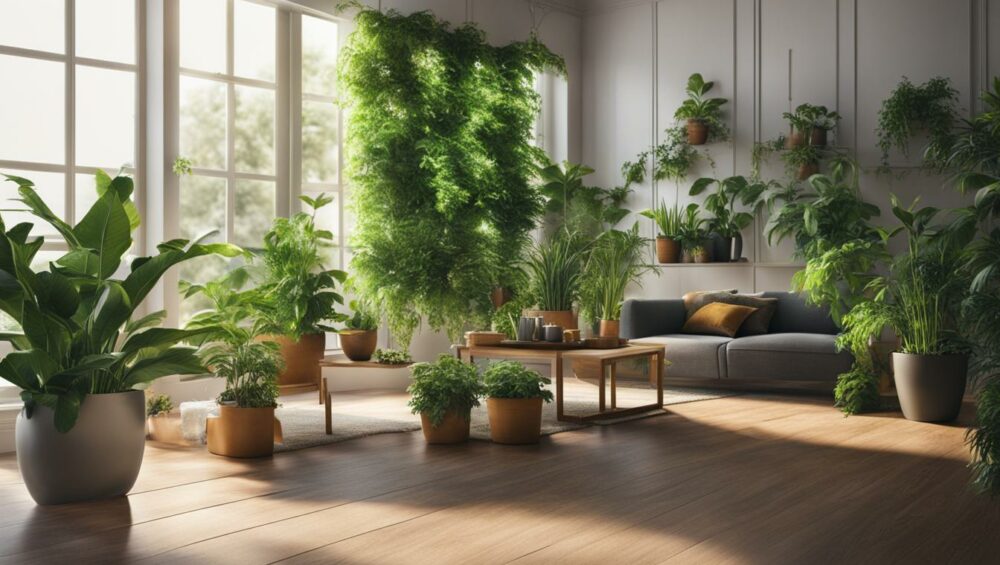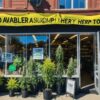Cultivating CBD flower at home offers a rewarding and tranquil gardening experience. With the right care and guidance, you can produce high-quality CBD flowers. Are you wondering how to grow CBD flower at home? Look no further! This comprehensive guide will provide you with all the information you need to successfully cultivate CBD flower in the comfort of your own home.

Growing CBD flower indoors is an art that can be mastered by anyone who is passionate about gardening. By following a few simple steps, you can enjoy the satisfaction of nurturing your own plants and reaping the benefits of their beautiful blooms.
From choosing the right seeds to providing the optimal growing conditions, each step in the process contributes to the success of your indoor hemp cultivation. With the correct techniques and knowledge, you can create a warm and humid environment that promotes healthy growth and maximizes CBD production.
Throughout this guide, you will learn about the essential steps involved in growing CBD flower at home, including:
- Choosing the right seeds
- Preparing the growing medium
- Providing the right conditions
- Watering and fertilizing
- Controlling pests and diseases
- Harvesting and compliance with regulations
Whether you are a novice gardener or an experienced green thumb, this guide will equip you with the knowledge and confidence to embark on your own CBD flower cultivation journey. Let’s dive in and uncover the secrets to nurturing CBD flower indoors with ease!
Choose the Right Seeds
When it comes to indoor hemp cultivation, selecting the right seeds is a crucial step towards successful and rewarding yields. The genetic makeup and strain selection of hemp seeds play a vital role in determining the plant’s characteristics and the specific traits it will exhibit.
Whether you are growing hemp for its CBD content, fiber, or nutritional value, it is important to choose seeds that align with your objectives. Opting for high-quality seeds from reputable seed banks like Nuka Seeds can provide you with comprehensive insights into the genetic profile of the seeds, allowing you to make an informed decision.
One important consideration when choosing hemp seeds is feminization. Feminized seeds have been specially bred to produce only female plants. This is advantageous as female hemp plants are the ones responsible for producing the desired flowers with high CBD content. By acquiring feminized seeds, you increase the likelihood of cultivating a crop that is predominantly female, maximizing your CBD flower production.
Novice growers may also benefit from using autoflowering seeds. These seeds have been bred to enter the flowering stage based on age rather than light cycles. This means that they will automatically transition to the flowering phase without requiring specific lighting schedules. Autoflowers also have a shorter growth cycle, allowing for quicker harvests and increasing the chances of success for beginners.
Prepare the Growing Medium
Creating the ideal growing environment for indoor hemp production is crucial to ensure the successful cultivation of high-quality CBD-rich flowers. One key element in this process is the selection of a well-draining growing medium that provides the necessary nutrients for the plants’ growth and development.
A well-draining growing medium allows excess water to flow away, preventing the roots from becoming waterlogged and promoting healthy root development. This is particularly important in indoor hemp production, as proper drainage helps prevent the accumulation of moisture, which can lead to root rot and other harmful conditions.
When it comes to selecting a growing medium for indoor hemp production, a soilless mix specifically designed for cannabis plants is an excellent choice. A soilless mix, as the name suggests, does not contain soil but instead consists of a blend of organic and inorganic materials that mimic the qualities of natural soil while promoting optimal growth.
This type of growing medium offers numerous benefits for indoor hemp production. Firstly, it eliminates the risks associated with soil-borne pests and diseases, ensuring a clean and healthy environment for the plants. Secondly, a soilless mix provides excellent aeration, allowing the roots to access sufficient oxygen, which is crucial for their growth and nutrient absorption. Lastly, this type of growing medium can be customized to suit the specific needs of hemp plants, allowing growers to provide the ideal nutritional balance for their crops.
A well-chosen soilless mix supports every stage of hemp cultivation, from germination and nurturing seedlings to promoting vegetative growth and facilitating the transition to the flowering phase. By providing the right combination of nutrients, moisture retention, and aeration, it helps ensure the development of robust plants that produce high-quality CBD-rich flowers.
Key advantages of using a soilless mix for indoor hemp production:
- Promotes proper drainage, preventing waterlogging and root rot
- Reduces the risk of soil-borne pests and diseases
- Provides adequate aeration for healthy root development
- Allows customization of nutrient balance for optimal growth
Using a well-draining soilless mix is a fundamental step in setting up a successful indoor hemp production system. By providing the ideal growing medium, you are laying the foundation for cultivating healthy and thriving hemp plants that yield high-quality CBD flowers.

Provide the Right Conditions
The success of indoor hemp cultivation relies heavily on creating the ideal conditions for your plants. By ensuring a warm and humid environment, maintaining the right temperature range, and providing adequate light, you can set the stage for healthy, thriving crops.
Optimal Temperature Range
For hemp plants to flourish, it is essential to maintain a temperature range of 70 to 80 degrees Fahrenheit (21 to 27 degrees Celsius). This temperature sweet spot provides the ideal conditions for growth and development. Consistently monitoring and adjusting the temperature within this range will promote optimal plant health and yield.
Humidity Control
Hemp plants thrive in a warm and humid environment, with a humidity level between 40% and 70%. Proper humidity control is crucial for preventing issues like mold, mildew, and pest infestations. Using humidity monitors and employing techniques such as misting or using a humidifier will help you maintain the appropriate humidity level for your indoor hemp garden.
12 Hours of Light
During the vegetative stage of hemp cultivation, plants require a consistent 12 hours of light each day. This light exposure stimulates photosynthesis and promotes vigorous growth. Using full-spectrum LED grow lights, you can provide the necessary light intensity and spectrum to mimic natural sunlight, ensuring optimal plant development.
Creating the right conditions for your indoor hemp garden sets the foundation for healthy and thriving plants. By maintaining a temperature range of 70 to 80 degrees Fahrenheit, controlling humidity levels between 40% and 70%, and providing a consistent 12 hours of light each day, you can nurture your hemp plants towards success.
Watering and Fertilizing
Proper watering and fertilizing practices are essential for the healthy growth of your indoor hemp plants. Regular watering is crucial for their well-being, but be careful not to overwater, as it can lead to root rot and other problems. Additionally, they should be fertilized regularly with a nutrient-rich fertilizer to provide the necessary nutrients for optimal growth.
One effective tool for precise and efficient fertilizer delivery is the Dosatron fertilizer injector. This device ensures accurate dosing and distribution of fertilizer throughout your plants, minimizing waste and maximizing nutrient absorption. Calibrating the Dosatron injector and selecting the correct fertilizer solution are crucial steps in providing the ideal nourishment for your plants.
By combining regular watering, nutrient-rich fertilizer, and the Dosatron fertilizer injector, you can create the ideal growing environment for your indoor hemp plants, supporting their growth and maximizing their CBD-rich flower production.
Benefits of Regular Watering and Nutrient-Rich Fertilizer
Regular watering and the application of a nutrient-rich fertilizer offer several key benefits for your indoor hemp plants:
- Promotes healthy root development and overall plant growth
- Enhances nutrient uptake and absorption
- Supports CBD-rich flower production
- Improves plant resilience and resistance to pests and diseases
- Optimizes the plant’s ability to withstand environmental stress
With consistent, proper watering and nutrient supply, you can nurture your indoor hemp plants to their full potential, ensuring robust growth and high-quality CBD flowers.
| Watering Tips | Fertilizing Tips |
|---|---|
| Check the moisture level of the soil regularly and water when it starts to feel dry. | Choose a fertilizer specifically formulated for cannabis plants, with the ideal NPK ratio. |
| Avoid overwatering, as it can lead to root rot and other issues. | Follow the recommended dosage on the fertilizer packaging for optimal results. |
| Ensure proper drainage to prevent waterlogged soil. | Apply the fertilizer evenly and avoid getting it directly on the leaves. |
| Consider using a drip irrigation system or a watering can with a narrow spout for precise watering. | Incorporate organic fertilizers for a more sustainable and eco-friendly approach. |
Harvesting and Compliance with Regulations
When it comes to harvesting hemp flowers, timing is crucial. The telltale sign that your hemp flowers are ready for harvest is when the trichomes have turned amber. At this stage, the flowers contain the desired level of cannabinoids and terpenes. To ensure the potency and aromatic qualities are maintained, the flowers should be carefully cut off and dried.
It’s important to note that indoor hemp cultivation in the United States must comply with the Controlled Substances Act, which differentiates hemp from marijuana based on THC content. THC, or delta-9-tetrahydrocannabinol, is the psychoactive component present in marijuana. By adhering to these regulations, growers can confidently nurture their indoor hemp crops while staying within the legal boundaries.
Compliance with regulations is essential to avoid any legal complications. Hemp flowers should have a THC content of no more than 0.3%. This threshold ensures that the hemp crop is classified as industrial hemp rather than marijuana. Regulatory bodies regularly conduct tests to verify the THC levels in hemp crops, so it’s crucial to monitor and maintain compliance throughout the cultivation process.
By harvesting hemp flowers at the right time and in compliance with regulations, growers can produce high-quality CBD-rich flowers that meet the legal standards. This not only ensures the success of the cultivation operation but also contributes to the overall growth and reputation of the hemp industry.
FAQ
How do I grow CBD flower at home?
Growing CBD flower at home involves choosing the right seeds, preparing the growing medium, germinating the seeds, transplanting seedlings, providing the right conditions, watering and fertilizing the plants regularly, controlling pests and diseases, and harvesting the grown hemp.
What factors should I consider when choosing hemp seeds for indoor cultivation?
When choosing hemp seeds for indoor cultivation, it is important to consider the genetic makeup and strain selection. Opt for seeds that align with your objectives, whether it’s for CBD, fiber, or nutritional hemp seeds. Trustworthy seed banks like Nuka Seeds offer comprehensive insights into the genetic profile of their seeds. Additionally, consider acquiring feminized seeds to increase the likelihood of cultivating female plants. Autoflowering seeds are also advantageous for novice growers, as they trigger flowering based on age rather than light cycles and offer a shorter growth cycle.
What type of growing medium should I use for indoor hemp production?
For indoor hemp production, a soilless mix specifically designed for cannabis plants is a good option. This medium supports crucial stages such as germination, nurturing seedlings, promoting vegetative growth, and transitioning to the flowering phase. It is essential for yielding high-quality CBD-rich flowers.
What are the ideal conditions for indoor hemp cultivation?
Hemp plants thrive in a warm and humid environment, with an ideal temperature range of 70 to 80 degrees Fahrenheit. The humidity level should be maintained between 40 and 70%. During the vegetative stage, providing a consistent 12 hours of light each day promotes vigorous growth. These conditions set the foundation for healthy, thriving plants.
How often should I water and fertilize my hemp plants?
Hemp plants require regular watering to thrive, but it’s important to avoid overwatering. They should also be fertilized regularly with a nutrient-rich fertilizer. Using a Dosatron fertilizer injector can ensure precise and efficient delivery of fertilizer to the plants. Calibrating the Dosatron injector and selecting the correct fertilizer solution are essential steps in providing the necessary nutrients for optimal growth.
When are hemp flowers ready to harvest, and what regulations should I be aware of?
Hemp flowers are ready to harvest when the trichomes have turned amber. Harvesting involves cutting off the flowers and drying them to maintain their potency and aromatic qualities. It is important to note that indoor hemp cultivation in the United States requires compliance with the Controlled Substances Act, which distinguishes hemp from marijuana based on THC content. By adhering to these regulations, growers can confidently nurture their indoor hemp crops while staying within legal boundaries.







